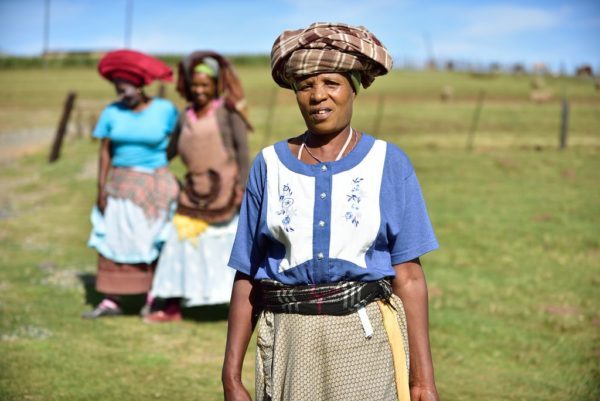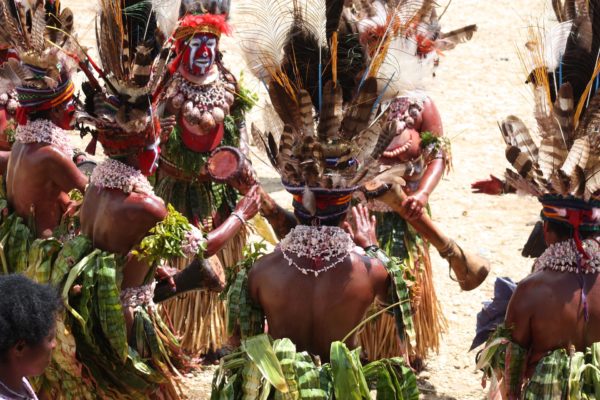What Makes a Language Strange?
There are over 7000 languages on the planet with over 2400 in danger of dying out. Despite this rich variety of languages, roughly half the world’s population speaks only 10 of them. This means that there are hundreds or thousands of languages you haven’t heard of. If you’re interested in languages or looking into learning a second language, then it may help to see just how dynamic language can be. To add a little perspective to foreign language learning, here are 10 weird languages that still exist in the world today.
Archi
There are currently ~900 people who speak this language in 8 villages located near the Risor river in the Dagestan, Russia. With such a low population of speakers, this language is threatened. And while its small community of speakers certainly makes it unique, it’s not what puts it on this list for weird languages.
In Archi, a verb can have nearly 1.5 million different conjugations. You read that correctly: 1.5 million conjugations. Take the verb “swim” for instance. In English, when you conjugate the verb, you have the possibilities of “I swim, he swims, they swim”. And you can also change the tense, “I swam, I will swim, I would have been swimming,” which complicates things. Now imagine all of these versions, but in 1.5 million different ways. Realizing how complicated Archi is can make you appreciate learning easier grammar.
Silbo Gomero
Found on the coast of Spain, Silbo Gomero is a language consisting entirely of whistles. As odd as it might seem, these whistles have varying pitches and tones. These are achieved with the cupping of hands to create something very similar to spoken language. While it may seem a bit over the top to outsiders, this communication technique is very efficient. The whistles help people communicate over obstacles like ravines and gorges where words wouldn’t make it to the other side. Imagine carrying on a conversation, at a distance, using only whistle filled sentences.

Xhosa
If whistles aren’t your thing, there’s always one of the Bantu clicking language spoken by 8 million inhabitants in South Africa. Xhosa is a tonal language with 15 clicks that function as consonants integrated into the language. The clicks fall into three different categories and tend to give foreigners who try to reproduce them quite the challenge. Xhosa has felt the influence of surrounding languages such as English and Afrikaans. It absorbed some of that vocabulary into its own.
Pirahã
Spoken by the Pirahã people in Brazil, this regional language has no words for colors or numbers. This may be difficult or impossible to imagine for us. Luckily, Pirahã has alternatives. Instead of specific colors like “red” and “purple,” they describe it as shades, “light” and “dark.” When they discuss numbers and amounts, they identify objects as either “many” or a “few.”
It may seem like a challenging concept for outsiders, but for those who speak the language, they’re able to communicate clearly without difficulty. Pirahã is also less complicated than other weird languages. It only has between ten and twelve sounds. Sometimes people resort to communication through humming and whistling to make it even more simplistic.
Rotakas
Rotokas is one of the 830 languages used in Papua New Guinea. The language of the Rotokas of Papua New Guinea holds the title for the simplest language with only 12 phonemes and a 12 letter alphabet. The language lacks nasal sounds as well.

Taa (ǃXóõ)
Taa is another Khoisan “clicking” language found in South Africa. If Rotokas is one of the simplest languages, then Taa is one of the most complicated languages. It has over 160 different phonemes, 110 of them made from clicking sounds. Clicks can also vary in tones as well: mid-falling, low, mid, and high. The clicks can be very challenging for foreigners to make.
Tuyuca
If you think that German can be challenging with its three genders, then you’ll want to avoid Tuyuca. This language boasts more than 100 genders for words. And what makes it even harder to learn is that single words build up to express ideas. This means that longer words communicate what the majority of people would use sentences entire sentences to express.
Tuyuca also uses words with endings designed to express whether or not you fully understand the topic you’re discussing. It is not a widely spoken language with only roughly 1000 speakers located around Columbia and Brazil.
Chalcatongo Mixtec
Spoken in Oaxaca, Mexico by roughly 6,000 people, this language is the most different from any other language. One characteristic that sets this language apart from others is the inability to create yes/no questions. “Are you here?” and “You are here” would be the same phrase in Chalcatongo Mixtec.
Pitjantjatjara
3000 native Aboriginals located in central Australia speak this language. Throughout Australia, many Aboriginal schools use the unique writing system of this language. Pitjantjatjara uses colons (:) to modify the pronunciation of vowels, and the underline (_) to highlight different pronunciations of consonants.
Esperanto
This weird artificial language boasts over 2 million speakers worldwide. Dr. Ludwig Lazarus Zamenhof created the language in 1887 as a way of bridging language barriers between people. Esperanto is supposed to function as an international language. The goal of this lingua franca is to help lower personal distrust. This hopefully inspires peace between various groups of people with different languages.
The language is created using a variety of structures and vocabularies from other languages. Latin served as its foundation. English, German, Russian, and the Romance languages influenced its creation alongside Dr. Zamenhof’s native Polish.
Esperanto also has 16 grammatical structures that function as rules for the language. Thankfully there are no exceptions to the rules. This means that once you learn them, you can speak without worrying. This means that its language learning programs tend to be very straightforward and easy to master.
Many More Unusual Languages Exist
At first glance, all languages can be weird. However, as you delve deeper into the world of languages you realize how many unique ones there are. This list skims the surface. Beneath our general understanding of languages rests a vast collection of varied and unique forms of communication.
By learning more about these “weird” languages, we can grasp a better understanding of language development and gain insight into alternative forms of communication. Hopefully, this motivates you to learn a second language. Even if you don’t choose one of these weird languages, at the very least you’ll appreciate them. Whenever you think French or Spanish grammar is complicated, remember Archi.







